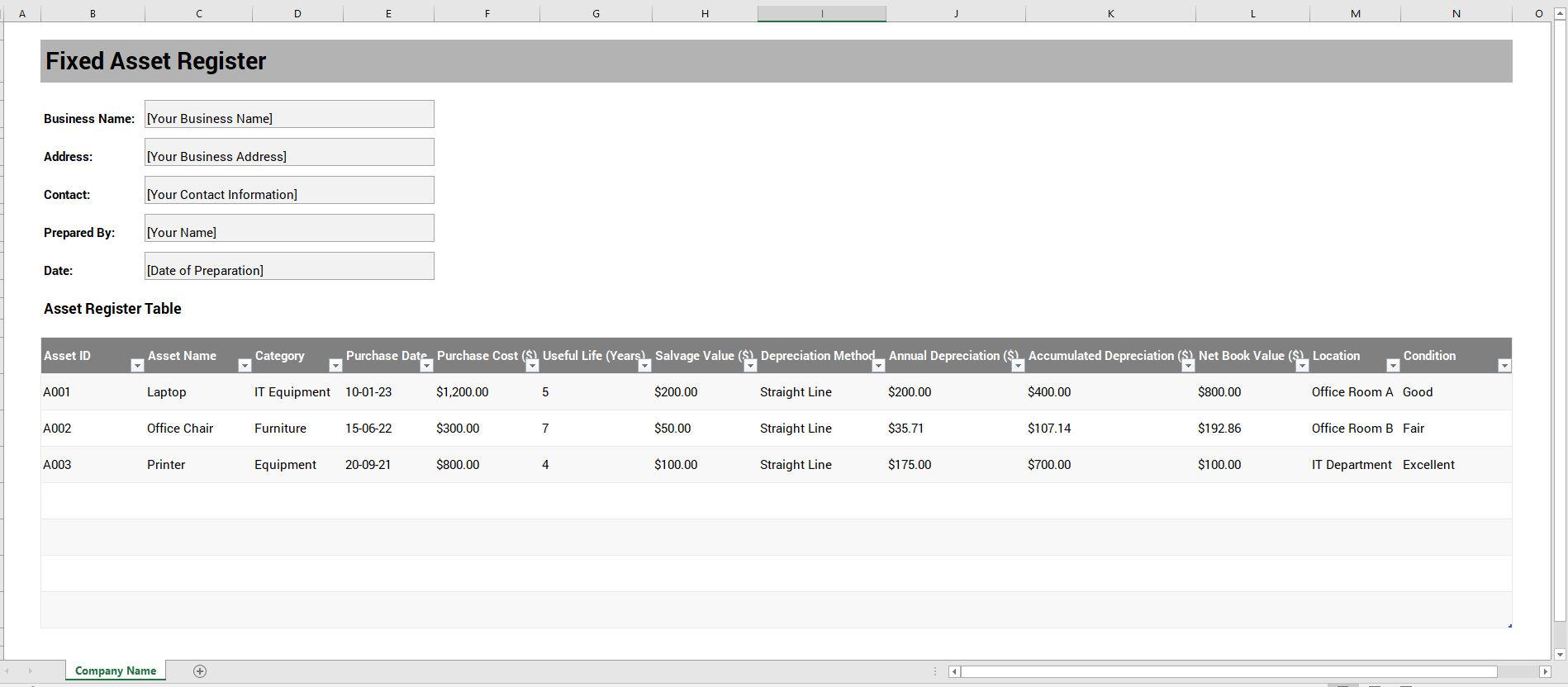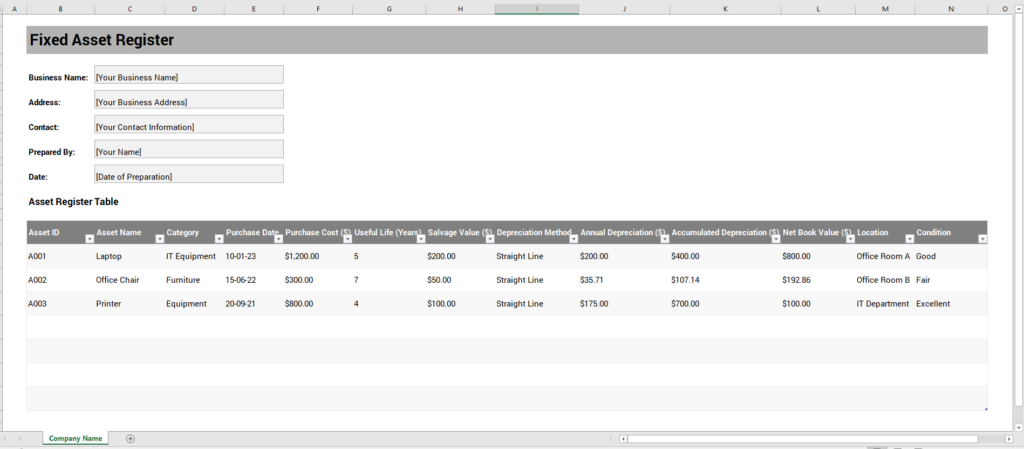Fixed assets include those assets that are brought for long-term employment. These assets will probably not be converted into cash soon. They include stuff like land, buildings, equipment, etc. A company or individual must monitor their fixed assets and know their value over time. This will help you manage the assets and know when they are useless.
A fixed asset register can be considered here. This document notes a business’s physical or fixed assets along with details related to them. Information about the assets, such as their quantity, value, location, status, etc., will even be recorded.
A fixed asset register is important as it lets a company know important details about its fixed assets. The company will know how many fixed assets it owns and their value. The depreciation over time can even be figured out. Therefore, the company can also effectively plan when to dispose of the asset. A company can maximize the use of the fixed asset when details such as this are known.
The register will mention the fixed assets. The quantity of the asset will be noted down. The cost of the asset will be mentioned. The date that the asset was brought needs to be recorded. The register will mention the location of the fixed asset. Generally, all relevant details related to the fixed asset will be mentioned.
Benefits of a Fixed Asset Register:
The following are some advantages of a fixed asset register:
- When the register is maintained, you can have all important details related to fixed assets in one place, such as their location, usage, maintenance expenses, and life cycle.
- When details about the fixed assets are known, making informed decisions about using the asset will be possible.
- You will be able to know when it is time to get rid of or dispose of the fixed asset.
- The security of the fixed assets can be guaranteed, as you will know where they are located and whether they are functional.
- You can know when the asset was brought and how long it was functional. This gives you an idea of how effectively it performs. You can even figure out its expected life cycle, allowing you to predict future maintenance expenses.
- You can keep proper track of depreciation as you can figure out the real value of the asset.
- Some may find recording details on the register in real-time time-consuming and hectic. Practice with this.
- Any errors, such as human errors, will make the fixed asset register useless. Pay attention while entering data.
How to make a Fixed Asset Register?
The following points can be helpful when making a fixed asset register:
Format of register:
This professional document needs to be simple to use. The heading can be “Fixed Asset Register.” You can mention the name of the business it concerns and its contact information. The time period that the register is handling can be noted down. You can add details related to the fixed assets in a table.
Make a table:
Include a column for an item that notes the fixed asset’s name. A column for quantity will mention this. There needs to be a column for cost to know the asset’s cost. A column for the date purchased will mention when the fixed asset was brought.
Include a column mentioning where the asset is located. If applicable, you can have a column for the serial number. You can also include a column for the depreciation method and another for the depreciation rate. There can be a column for notes.
Avoid extra details:
Only add what is important so that the fixed asset register is easy to fill in and people use it.
A fixed asset register can help you keep a detailed and understandable record of your company’s fixed assets so that they can be managed properly.
- Contractor Entry Log Template
- Holiday Party Planner Template
- Marketing Forms Used by Businesses
- HR-related Form Templates
- Personal Finance Tracker
- Daily Dog Care Checklist
- Holiday Shopping Budget Sheet
- Volunteer Work Hour Schedule Worksheet
- Vehicle Booking Sheet Template
- Payroll Audit Report Template
- Bonus Payment Record Sheet
- Overtime Payment Sheet Template
- Meeting Minute Examples
- Vacation Packing Checklist
- Carry-On Essentials List Template

